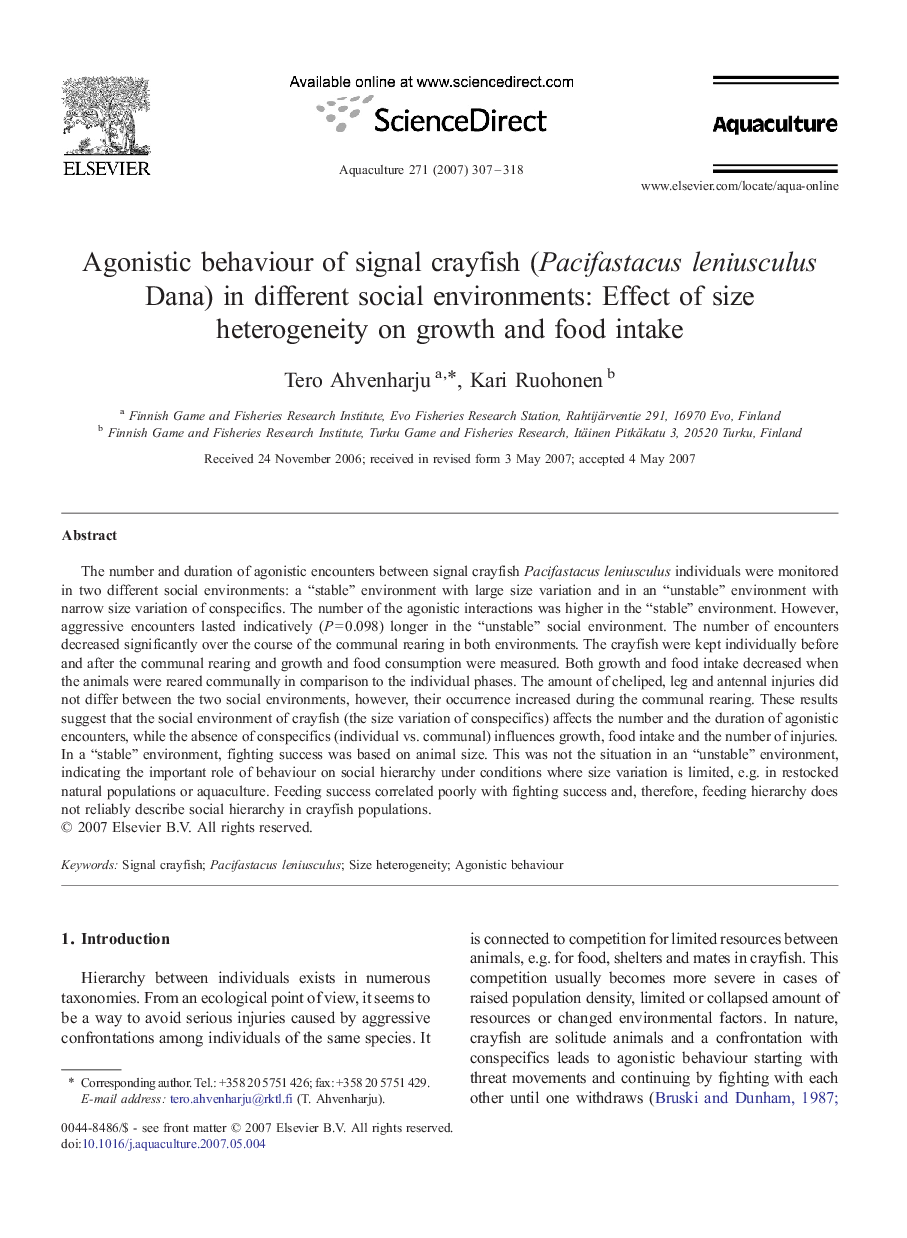| Article ID | Journal | Published Year | Pages | File Type |
|---|---|---|---|---|
| 2425155 | Aquaculture | 2007 | 12 Pages |
The number and duration of agonistic encounters between signal crayfish Pacifastacus leniusculus individuals were monitored in two different social environments: a “stable” environment with large size variation and in an “unstable” environment with narrow size variation of conspecifics. The number of the agonistic interactions was higher in the “stable” environment. However, aggressive encounters lasted indicatively (P = 0.098) longer in the “unstable” social environment. The number of encounters decreased significantly over the course of the communal rearing in both environments. The crayfish were kept individually before and after the communal rearing and growth and food consumption were measured. Both growth and food intake decreased when the animals were reared communally in comparison to the individual phases. The amount of cheliped, leg and antennal injuries did not differ between the two social environments, however, their occurrence increased during the communal rearing. These results suggest that the social environment of crayfish (the size variation of conspecifics) affects the number and the duration of agonistic encounters, while the absence of conspecifics (individual vs. communal) influences growth, food intake and the number of injuries. In a “stable” environment, fighting success was based on animal size. This was not the situation in an “unstable” environment, indicating the important role of behaviour on social hierarchy under conditions where size variation is limited, e.g. in restocked natural populations or aquaculture. Feeding success correlated poorly with fighting success and, therefore, feeding hierarchy does not reliably describe social hierarchy in crayfish populations.
